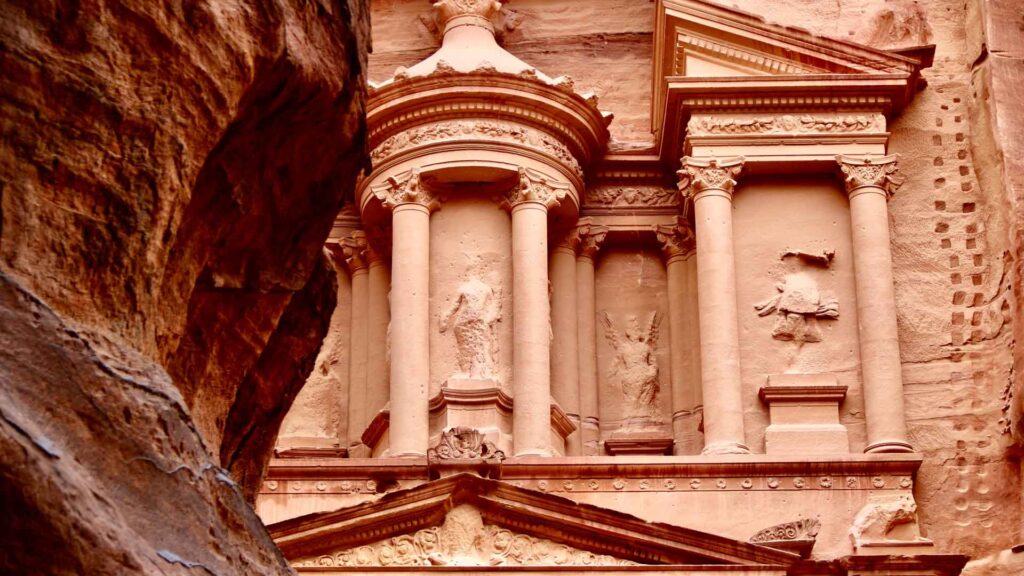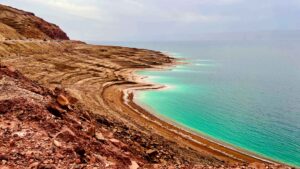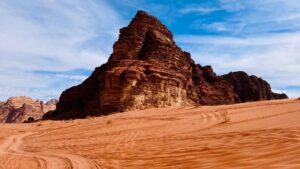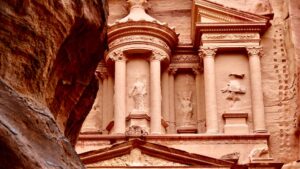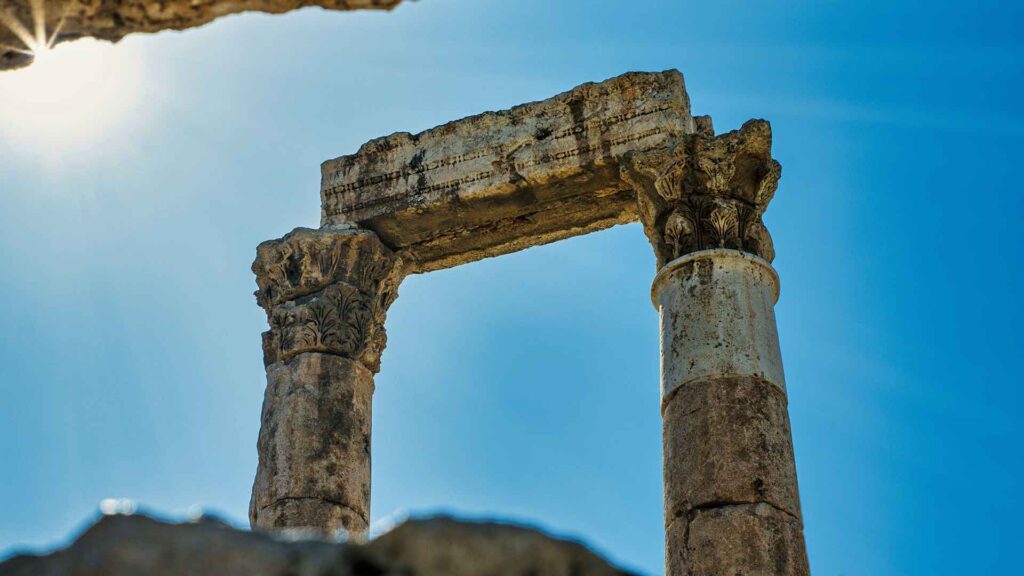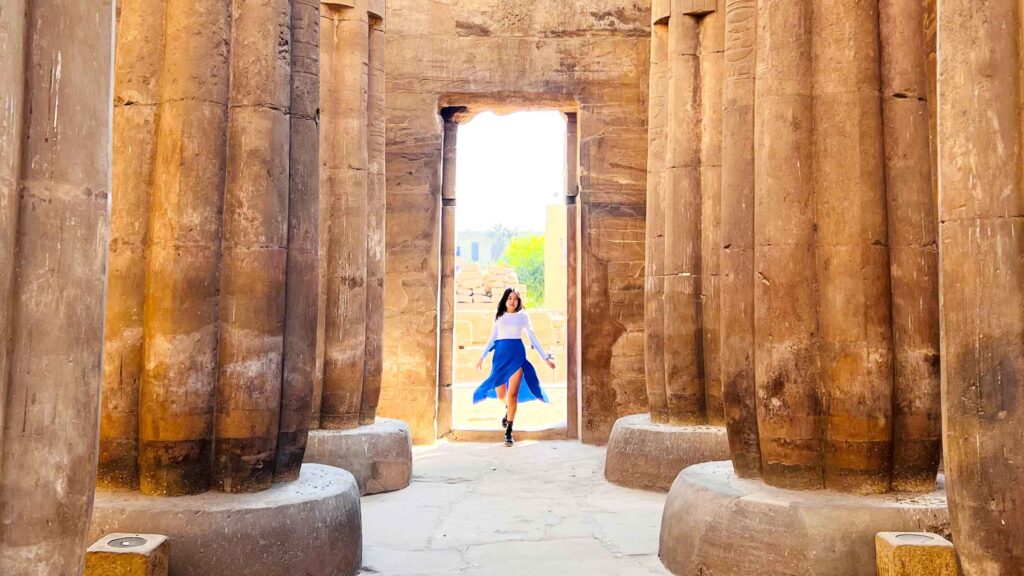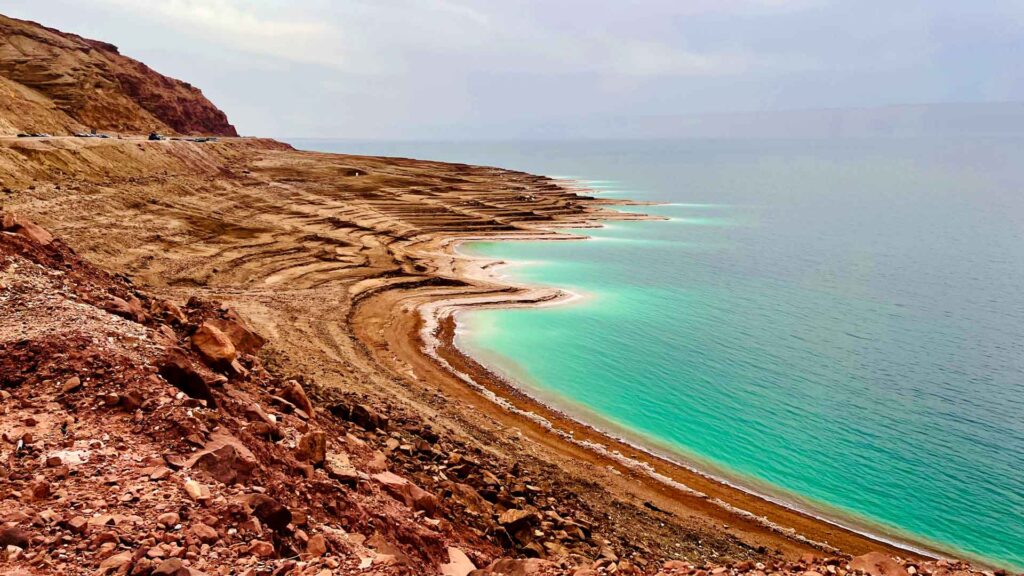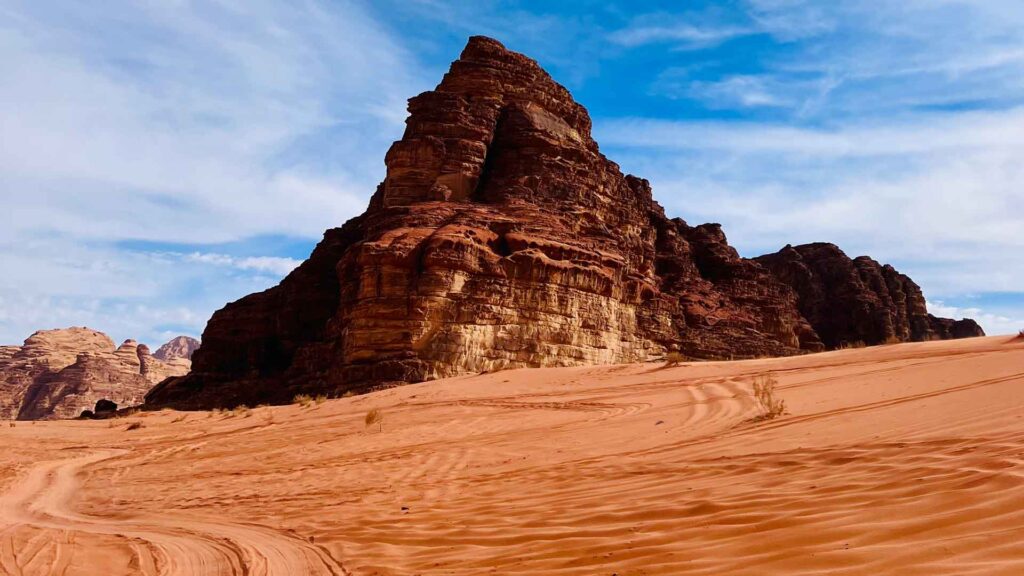Introduction
Welcome to Petra, the legendary city where history and fiction merge to create an extraordinary experience. Nestled in Jordan, Petra’s sandstone façades and winding trails offer a glimpse into a world where every corner holds a new wonder. Whether you’re here to marvel at the iconic Treasury, explore mysterious rock-cut tombs, or tackle epic trails, this guide has you covered.
From the best times to visit to a breakdown of thrilling hikes and places to eat, you’re about to embark on an unforgettable journey. So grab your passport and get ready—this adventure is about to get iconic. Let’s dive in and discover Petra like never before!
A non-requested history pill (you can skip this)
Alright, it’s time for a quick history lesson, because why not? Let’s dive into the fascinating story of Petra, also known as the Rose City. Get ready to learn more than you ever wanted to know about nomadic merchants and crumbling ruins (and don’t worry, there won’t be a pop quiz afterward).
So, picture this: over 2,000 years ago, Petra was the hottest spot in town, aka the capital of the Nabataean Kingdom. It was basically the Vegas of ancient Arabia, where all the cool traders stopped to rest their camels and exchange goods (yes, forget about camel selfies, they weren’t a thing back then). These nomadic merchants were like the delivery drivers of their time, carting around textiles, incense, spices, ivory, and all kinds of precious goodies from Arabia, Asia, and Africa. They were basically the original Amazon Prime, delivering goods and cultural exchanges faster than you could say “one-click checkout” (ok, maybe not, but you get the gist). They were the kings of commerce, and Petra was their headquarters.
As the trading scene heated up, so did Petra. The city grew like a well-fed camel, harmoniously blending Hellenistic and Roman architectural styles (talk about a cultural mashup). But, like all good things, Petra’s glory days eventually came to an end. The records of Byzantine Petra only go as far as the 7th century, and after that, the city was left to gather dust like your old video game console. And boy, did it gather dust! Petra became a forgotten relic, buried in the sands of time.
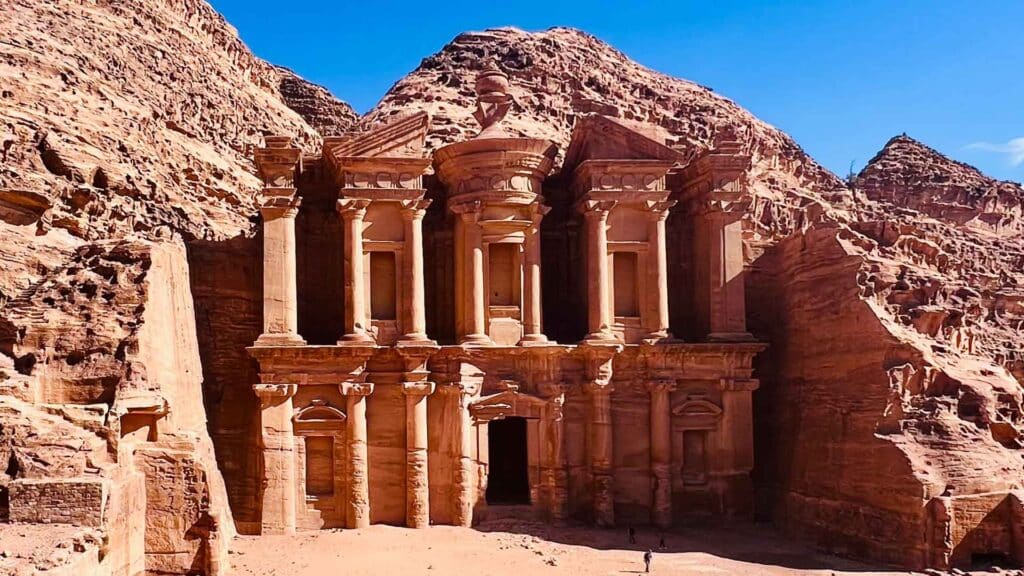
But fear not. In the 12th century, the Crusaders built a few fortresses there to keep an eye on Muslims, but they were soon forced to abandon the city apparently after destroying all the olive trees in the area (so much for being eco-friendly! But now that I mention it, sustainability wasn’t a thing yet. And unfortunately it still isn’t for too many people). It wasn’t until 1812 that the world got a glimpse of Petra once again. Swiss explorer Johann Ludwig Burckhardt, on his way to Cairo, heard whispers of ancient ruins hidden in a narrow valley near the tomb of Aaron, Moses’ brother. With a clever disguise (dressing like a local who wanted to sacrifice a goat in honor of Aaron’s tomb) and some smooth talking (rigorously in Arabic), he became the first modern European to lay eyes on the ancient Nabatean city of Petra. (Oh, and by the way, this guy didn’t stop there. He went on to discover Abu Simbel in Upper Egypt because apparently, discovering one mind-blowing site wasn’t enough for him. Talk about an overachiever).
Fast forward to today, and Petra is the coolest kid in class. It’s a UNESCO World Heritage Site and one of the New Seven Wonders of the World. It has seen it all, from Christianity to Islam, like a cultural chameleon that can’t make up its mind. And let’s not forget the jaw-dropping architecture that still stands tall, a testament to the passage of time and the remarkable skills of ancient civilizations.
So there you have it. Petra’s past is as wild and diverse as a bustling souk on a Friday market day. From nomadic traders to forgotten ruins to rediscovery by brave explorers, it’s a tale that’ll make your head spin faster than a dervish dancer. Get ready to explore this ancient wonder and witness the incredible fusion of history, architecture, and cultural transitions. Petra is waiting, and it’s ready to rock your world!
Best things to do
Petra is a place where only time is the limit, as the more you walk the more hidden gems you can discover. But besides the sightseeing-related activities, there’s not much else to do. Below you can find a brief summary of all the things to see or do in Petra so that you have a better idea. For the details on the ins and outs and the best photo spots, you can read my Ultimate 2-day Petra Itinerary.
Petra trails
There are several trails with varying difficulty levels you can try out in Petra. Here’s the list (for more details, read my Ultimate 2-day Petra Itinerary):
- Main Trail: easy, 4.5km
- High Place of Sacrifice Trail: moderate, 1.5km
- Wadi al Farasa Trail: moderate, 3km
- Al Khubtha Trail: moderate, 3km
- Ad-Deir Trail: moderate-hard or easy-moderate (depending on whether you start from the City Complex or from the Monastery), 2km
- Little Petra-to-Petra Back Door Trail: moderate, 8.5km
- Al-Madras Trail: moderate, 1km
- Umm Al-Biyara Trail: hard, 2.5km
- Jabal Haroun Trail: hard, 8.5km
- Sabra Trail: moderate, 9km
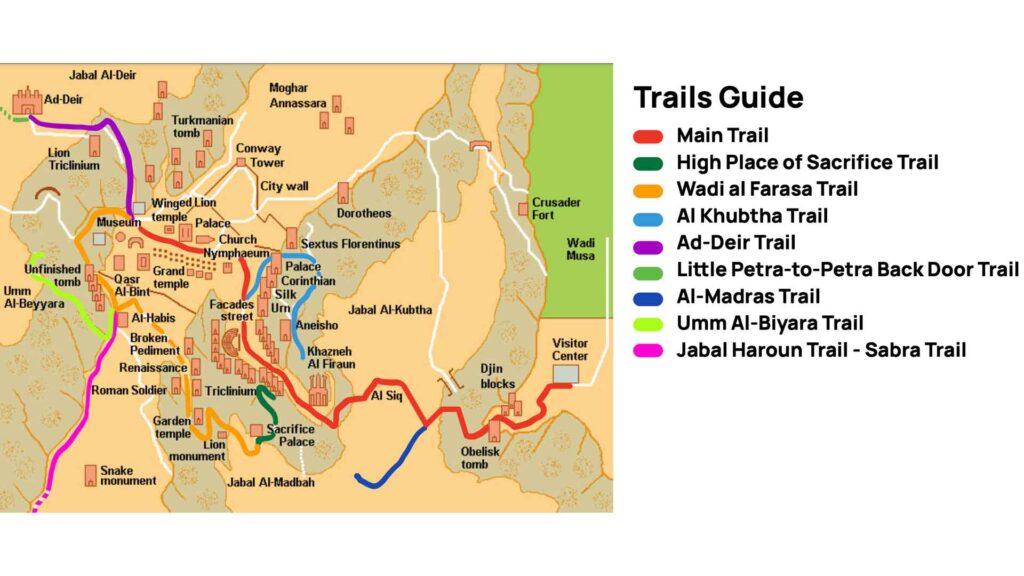
The Siq
It’s the first thing you’ll see when entering Petra from the Visitor Center right after the Djinn Blocks and Obelisk Tomb. Indeed, the Main Trail goes through this 1.2 km narrow gorge that will lead you right in front of the Treasury.

The Treasury of Petra
When you think about Petra, you picture the Treasury in your mind. That’s normal and it totally lives up to your expectations. I recommend coming as early as possible in the morning and to take some pictures from one of the viewpoints.
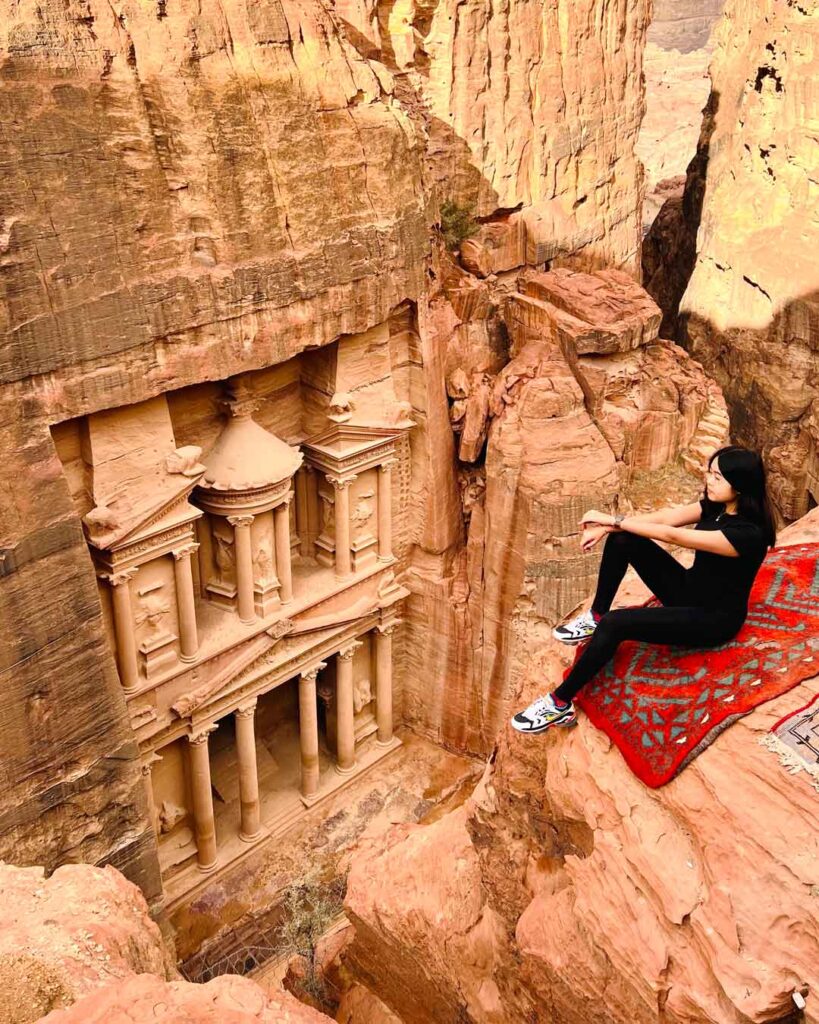
The Monastery of Petra
It might not be the first thing that comes to your mind when you think about Petra, but it quickly became my favorite place in Petra, even more than the iconic Treasury. It’s bigger, there are smaller crowds and the Little Petra-to-Petra Back Door Trail to reach it is hands down the most beautiful trail imo.

The Royal Tombs
There are four Royal Tombs: the Urn Tomb, the Silk Tomb, the Corinthian Tomb and the Palace Tomb. They are all carved in the same mountain and are easily accessible from the Main Trail after the Treasury.
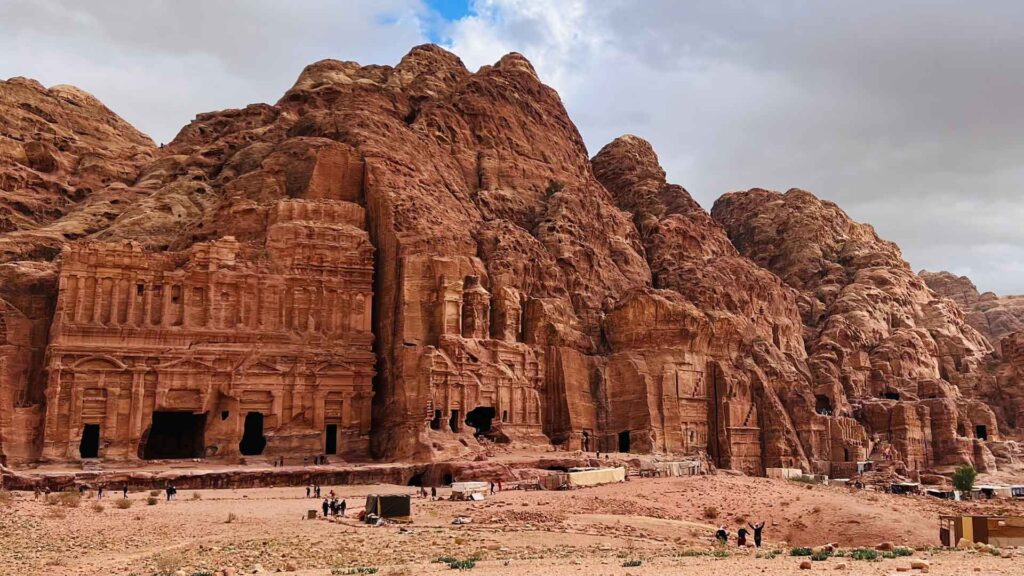
Little Petra
Siq Al-Barid, also known as Little Petra, is completely free to visit and is literally a little Petra with little crowds. It has its own Siq and carvings, but unlike Petra, it was probably built as a fancy suburb during the 1st Century AD. You can find all the details on how to reach Little Petra, what to see, and how to reach Petra through the Back Door Trail in my Ultimate 2-day Petra Itinerary.
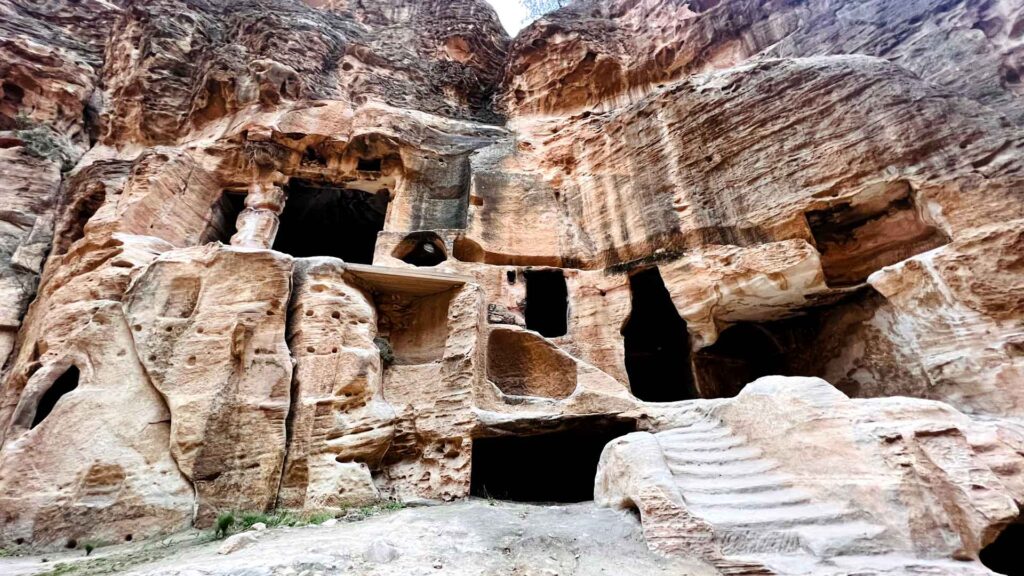
Petra by Night
If you visit Petra on a Monday, Wednesday, or Thursday you can also try the Petra by Night experience. The event starts at 20:30 and doors at the Visitor Center open at 20:15 to allow you to walk through the Main Trail all the way to the Treasury lit by thousands of candles. Tickets can be purchased on the same day at the Visitor Center.
However, this experience is not free, as you need to pay JOD 17 (~USD 24, ~EUR 23) on top of a valid day ticket (either Jordan Pass or regular ticket), and – in my humble opinion – is quite overrated. First, unless you start queueing at 19:30 and run through the Siq, you won’t be able to take the iconic shot of the deserted Treasury lit by candlelight, as people will sit in between the candles. So if you wanna at least enjoy the stroll you can wait until 20:30 to leave from the Visitor Center. Second, even if you were the first to arrive and had the Treasury just for yourself for 5 minutes, the candles are pretty dim and you would need a long exposure shot. Third, the actual show is meh, with terrible acoustic, weak storytelling, and the Treasury being illuminated with some bold colors in a rapid sequence, kinda resembling a nightclub. At least they serve hot tea. Fourth, they switch off all the lights at 21:50 and local guides urge you to leave the area so that everyone’s out by 22:30. So yeah, in conclusion, I’d say that Petra by Night is a monumental tourist trap.
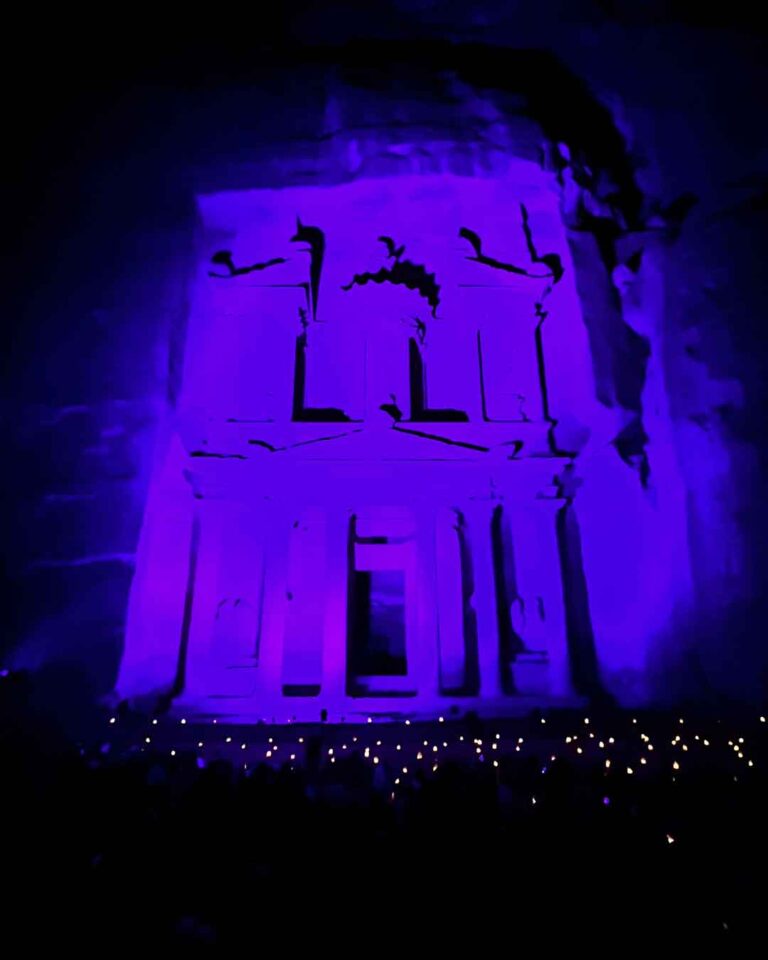
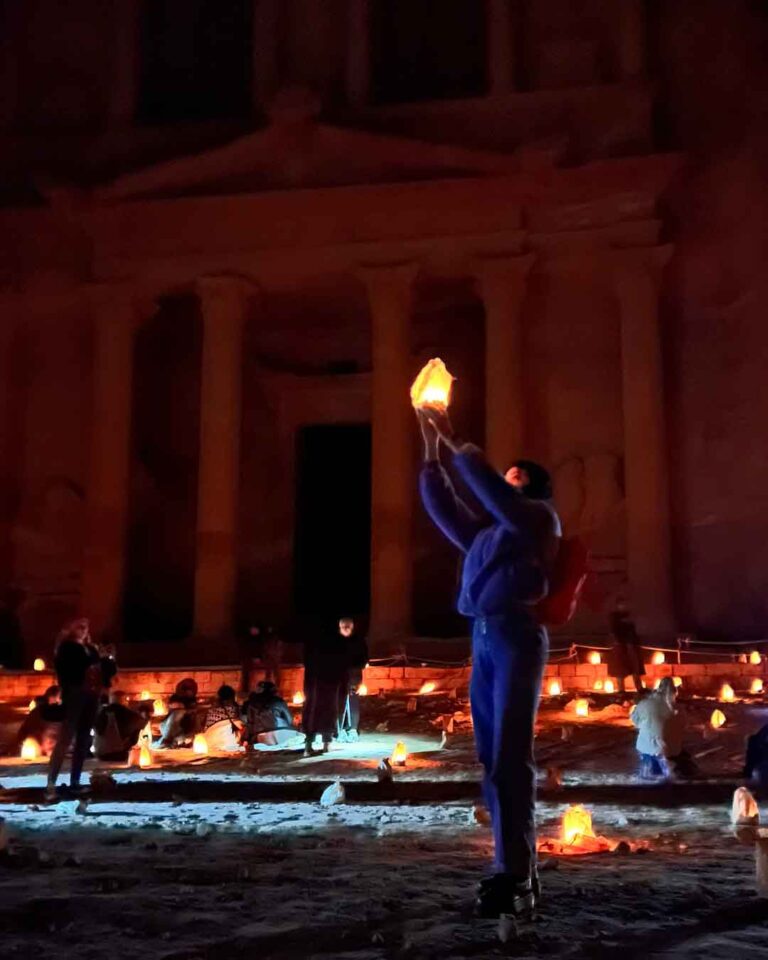
Planning your trip to Petra: some useful tips
Planning ahead is key to make the most out of your visit to this ancient wonderland. Trust me, you don’t want to be wandering aimlessly like a lost camel in the desert. Dedicate at least two days to fully explore the main trails and even venture off the beaten path. Sure, you can try to squeeze it all into one day, but you’ll probably be running around like Indiana Jones on a caffeine overdose (I still did and I had two days, so you can take the odds).
Let’s also talk timing. Petra can get real hot during the summer months, so it’s best to avoid melting like a popsicle and plan your visit in the spring or fall. I mean, who wants to be sweating buckets while trying to channel their inner archaeologist? And if you want more juicy details, check out my ultimate guide on the best time to visit Jordan. Oh, and a friendly reminder: wear comfy shoes, because there’s going to be more walking than you did during that ill-fated attempt at a 5k run. And don’t forget to slap on that sunscreen, unless you want to resemble a roasted tomato by the end of the day, and bring plenty of water to quench your thirst and stay hydrated. And while you’re at it, check out my guide on what to wear, as well as my tips on what to pack to best prepare yourself for your trip.
Petra opening times
When it comes to opening times, during summer Petra is open from 6 am to 6 pm (April-October), while during winter it closes earlier at 4 pm (November-April). But that does not mean that you have to be out before closure. It only implies that you can no longer enter, even though staying the night is forbidden, so there’s a little bit of a fine line there.
Petra tickets
I think it’s time to talk money, because, let’s face it, travel ain’t always cheap. Visiting Petra can put a dent in your wallet if you don’t have a magical Jordan Pass. Unless you’re a child under 12 or a local resident, you’ll need to cough up something like JOD 50/55/60 (~ USD 71/78/85, ~ EUR 65/72/79) for 1/2/3 consecutive days. And if you’re just passing through without spending the night in Jordan, brace yourself for a whopping JOD 90 (~USD 127, ~EUR 118) ticket fee. But fear not, I’ve got your back with my ultimate guide on the Jordan Pass, which can make your visit free like finding money on the street. You’re welcome.
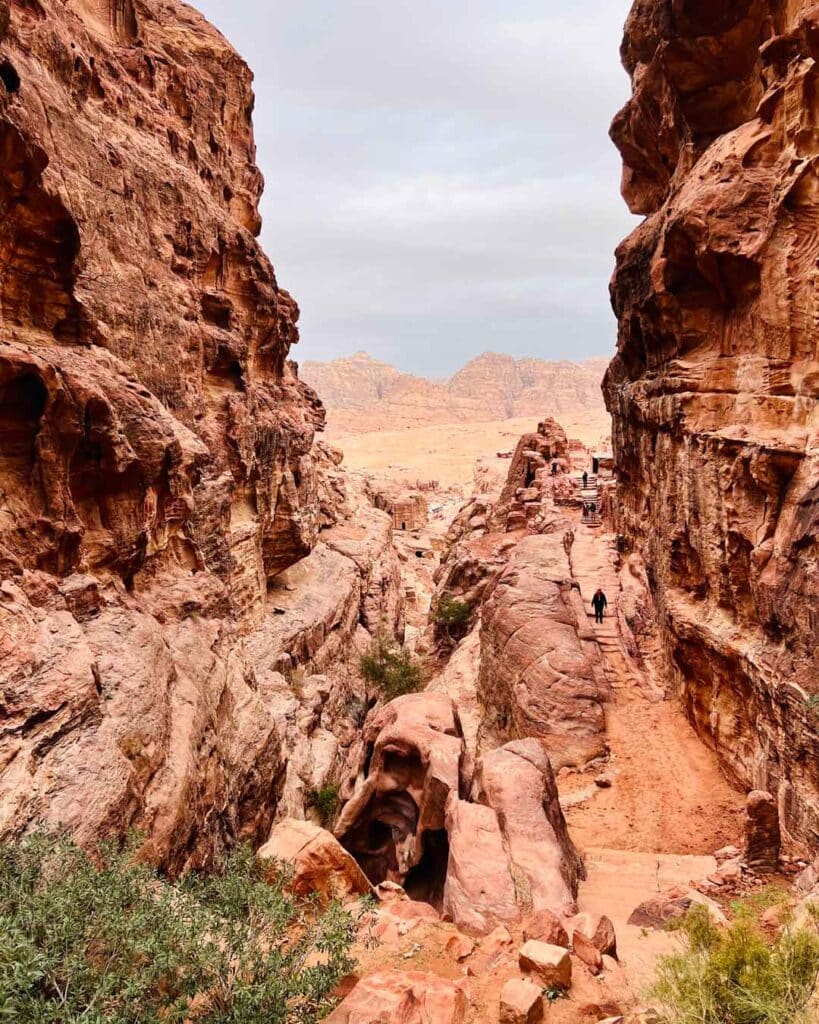
Petra additional expenses
Let’s not forget those sneaky extra expenses. There’s JOD 17 (~USD 24, ~EUR 23) for Petra by Night, which I personally don’t recommend as I explained earlier in this article. If you’re up for a guided adventure, you might need to shell out around JOD 50-100 (~USD 71-141, ~EUR 65-131) for a tourist guide. And if you’re feeling fancy and want a chauffeur to whisk you around in a club car, expect to pay around JOD 10-25 (~USD 14-35, ~EUR 13-33). It’s like being in a rock star’s entourage, minus the screaming fans and questionable fashion choices. Lastly, please refuse any horse/donkey ride as these poor creatures are often malnourished and kept under debatable conditions.
Taking a Break From Exploring: Where to Eat in Petra
If you know me, you certainly expected this section. Unfortunately, I only spent two nights in Petra so I didn’t have the chance to compare multiple restaurants. However, I think that the only place I tried is still worth mentioning.
My Mom's Recipe Restaurant

OVERALL RATING
This family-owned restaurant serves typical Middle Eastern food in a traditional setting. I particularly enjoyed Mansaf, Jordan’s national dish, together with other traditional recipes that have been passed down from the owner’s mom. Prices are fair and overall I’d recommend trying out this place if you happen to be in Petra.
LOCATION
It is conveniently located on Tourism Street (main street), just 280m away from the Visitor Center. The dining room is in a covered terrace overlooking the main area and it has what I think are traditional Jordanian bedouin tents interiors (carpets and hanging lamps everywhere plus some creepy animal pelts on the staircase walls). If I contextualize it in the surrounding environment, it’s more or less what I’d expect from a traditional restaurant in Petra.
menu
As a starter, we ordered two portions of hot Sambusak which are savory pastries filled with different ingredients (in our case, cheese or meat). They were nice, but not gastritis-friendly as they were deep fried. Moussaka also met the expectations taste-wise, even though it didn’t look like the Greek counterpart I’m used to, probably because it was 100% vegetarian and thus more watery. Lastly, Mansaf, the Jordanian national dish, was a pleasant discovery. It’s fluffy yellow rice (thanks to turmeric) topped with lamb chunks cooked in jameed – fermented dried yogurt sauce – and served on a thin flatbread. You eat it with your hands by taking a small piece of bread with rice and lamb on top.
service
The staff is pretty welcoming and used to serving tourists. They engage in a bit of the usual chit-chat, and dishes are served quickly. I appreciated the two warm pitas (Arabic bread) on the house served with oil and local spices.
bill
We spent a total of JOD 38.08 (~USD 54, ~EUR 48) for two people, which is not cheap but in line with European prices for the quantity of food we ordered. Prices are subject to 7% sales tax and 5% service charge.
-
Cheese Sambusak JOD 4
-
Meat Sambusak JOD 4
-
Moussaka JOD 9
-
Mansaf JOD 12
-
Fresh Mango Juice JOD 3
-
Big Bottle of Water JOD 2
How to reach Petra
Petra is located more or less halfway between Aqaba and Amman and it is relatively easy to reach.
From Aqaba
By car: it’s the fastest way to reach Petra from Aqaba (2h). You can either rent a car for the day (JOD 25-30 per day) or opt for a private transfer (around JOD 45 one-way).
By bus: departure times for local buses vary greatly depending on the time they get full so they can be unreliable if you have a fixed schedule. I would rather take the JOD 15 JETT bus that leaves every day from the JETT Office / Movenpick Tala Bay / Divers Village in Aqaba at 8 am and drops you off at Petra Visitor Center at 11 am. From Petra, buses leave for Aqaba at 5 pm.
From Amman
By car: again, it’s the fastest way to reach Petra (3h). However, unless you rent a car, a private transfer can be quite expensive (around JOD 85 one-way).
By bus: You can take the JOD 10 JETT bus that leaves every day from the 7th Circle Office / Abdali Office in Amman at 6:30 am and reaches Petra Visitor Center at 10:30 am. From Petra, buses leave for Amman at 5 pm.
Save this on Pinterest!



